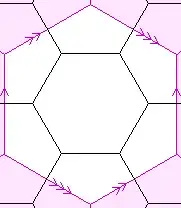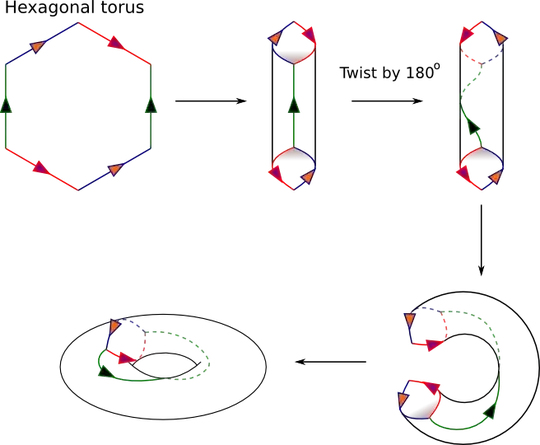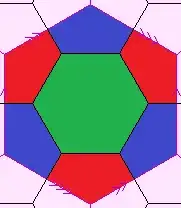Due to Kuratowski's Theorem, graphs that contain the Utility graph as a subdivision can't be drawn in the plane. But on a genus $1$ surface, a torus! This is also resembled by Euler's characteristic: $$ \begin{array}{cCcc} \chi =& 2-2g &=& V-E+F\, \\ &0 &=& 6 - 9 \, \,+ \,3 \end{array} $$ We calculate $3$ faces! Now, I found at least two "flat" representations of the torus:
To the left (the Lord and) I see two squares and one surrounding face and to the right it rather looks like three squares and a hexagon...
Why is that?
The hexagonal case needs another $180^\circ$ twist ("Indian Burn") to get the torus.
Is that relevant?



